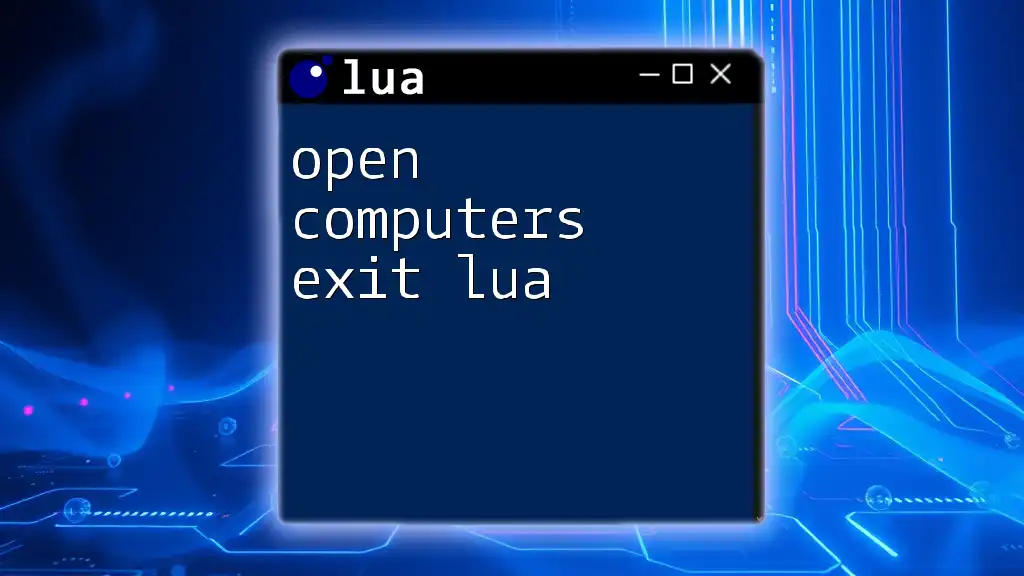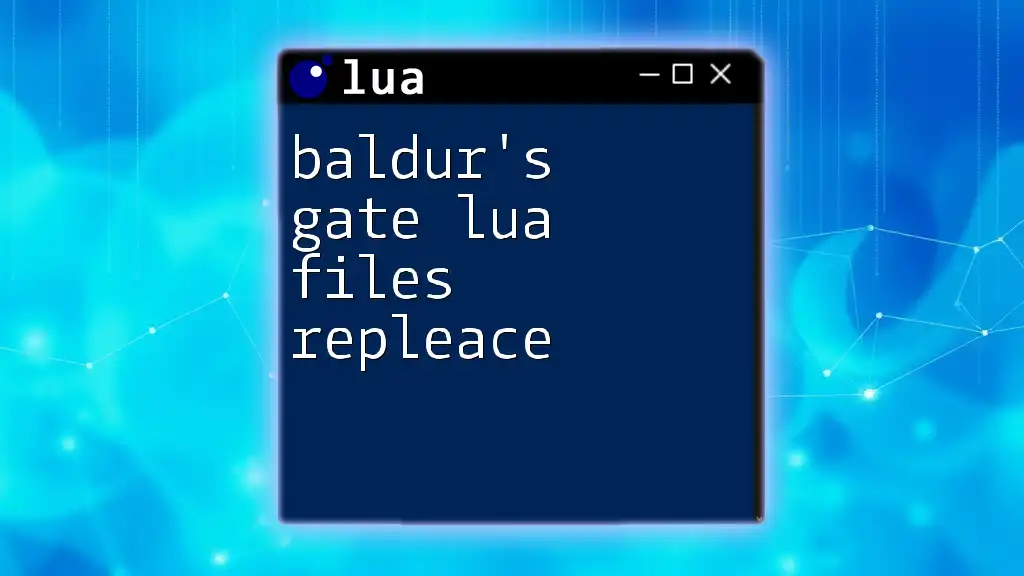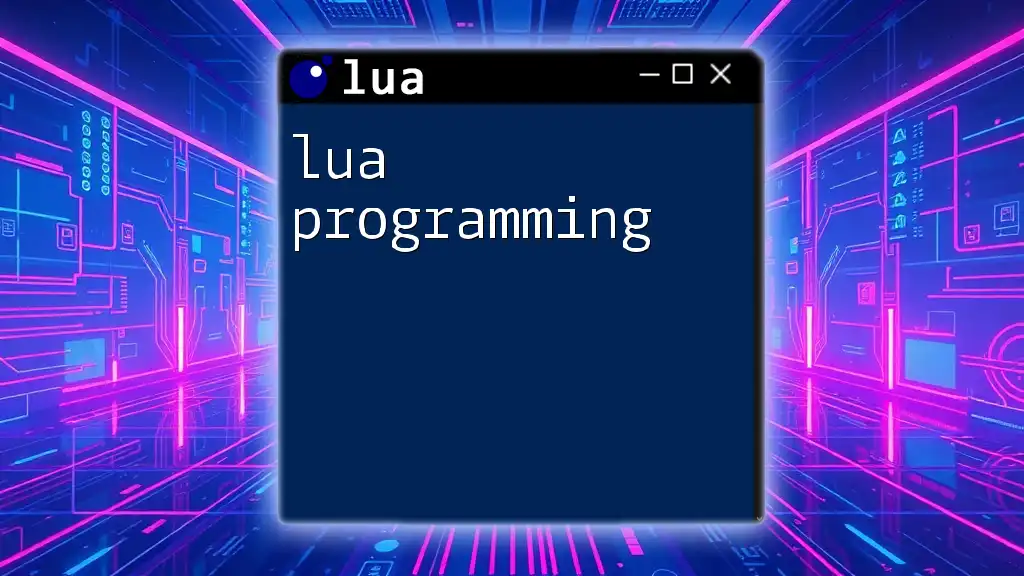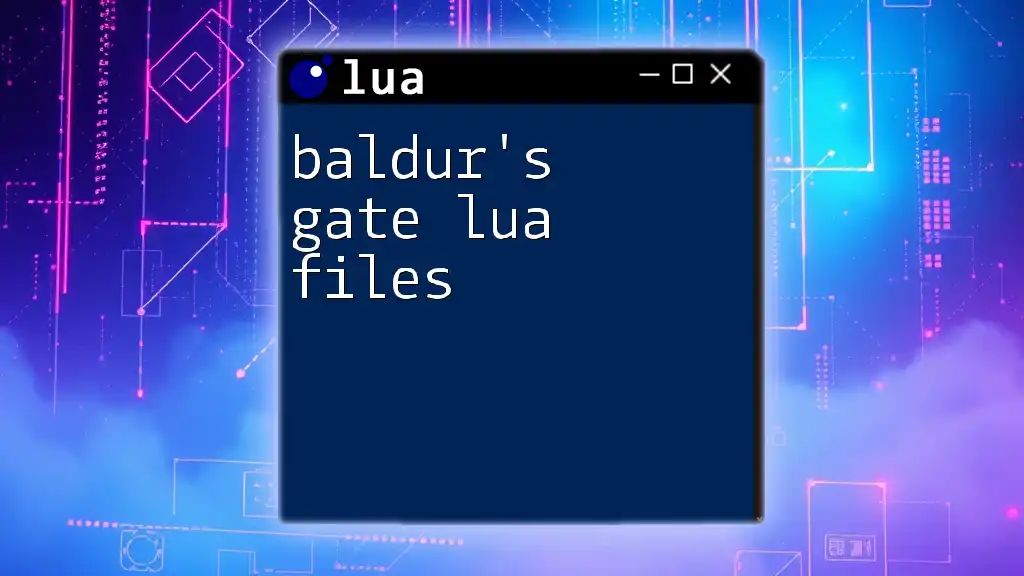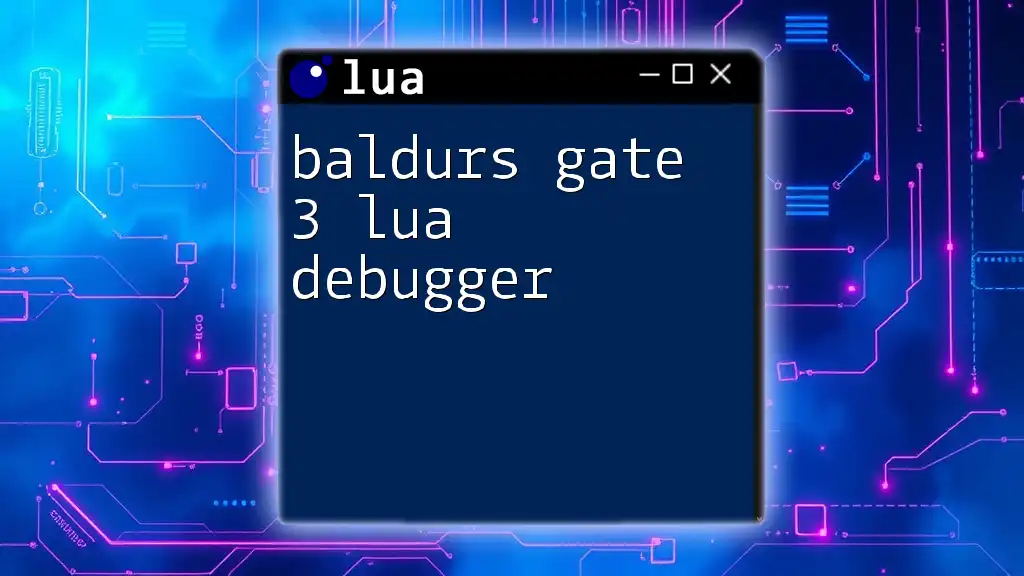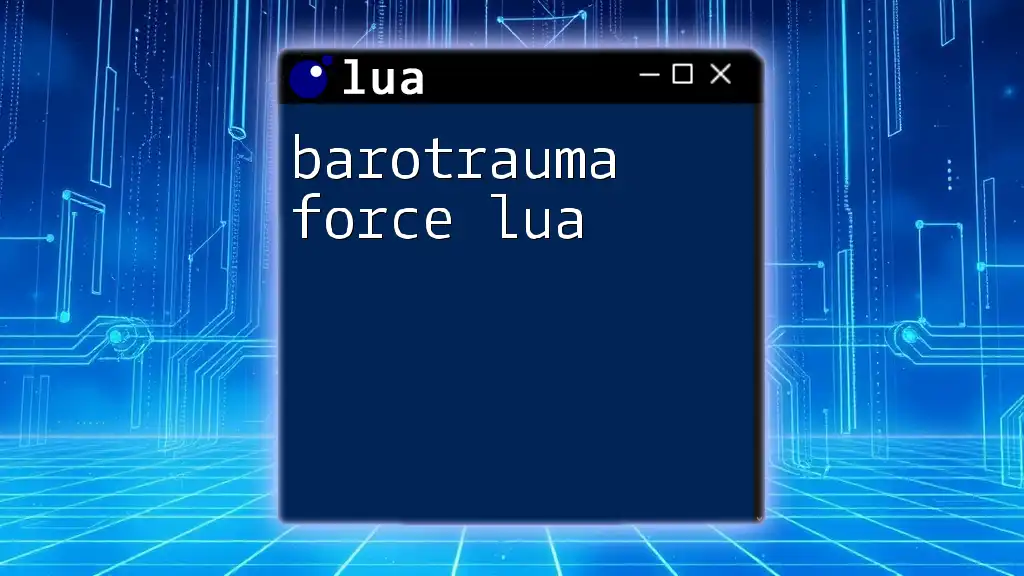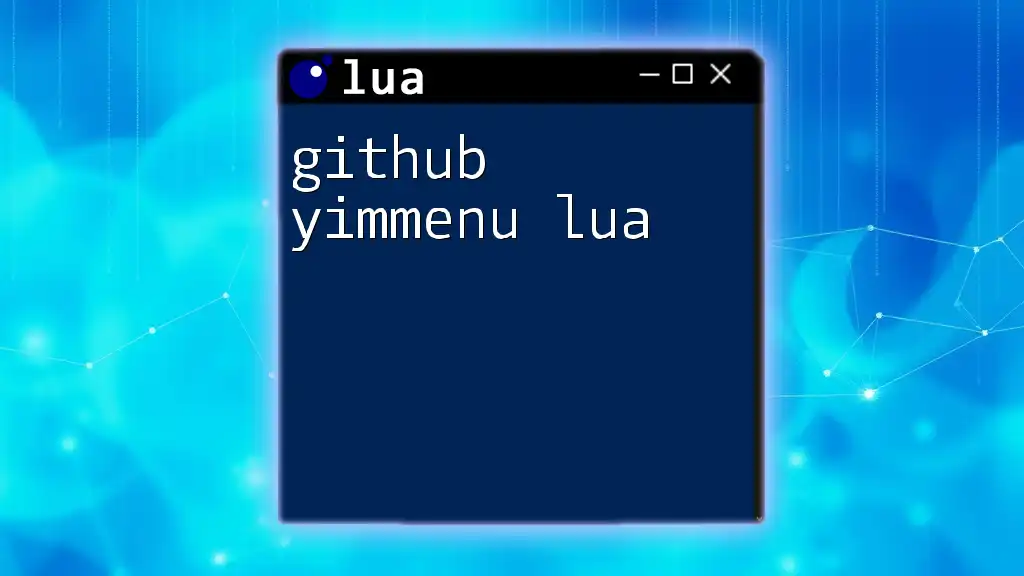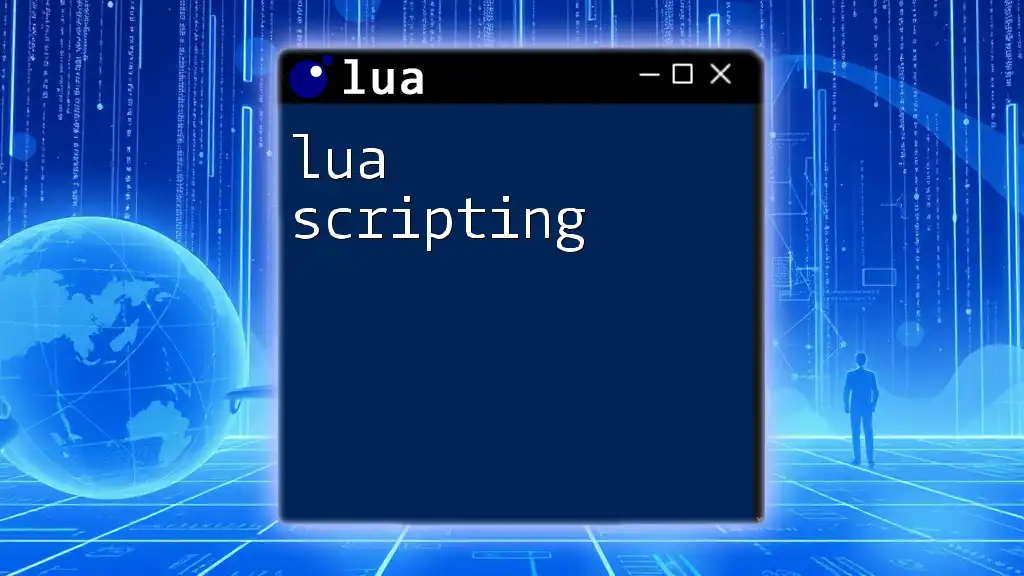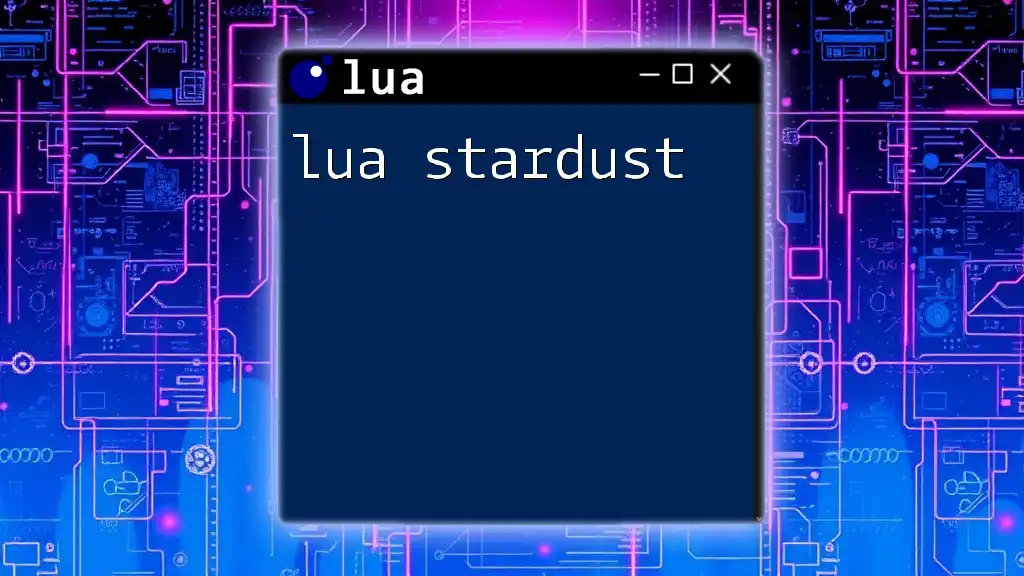The command to exit Lua in OpenComputers is `os.exit()`, which terminates the Lua program being executed.
Here’s a code snippet demonstrating its use:
os.exit()
Understanding Lua in Open Computers
What is Lua?
Lua is a lightweight, high-level programming language designed primarily for embedded use in applications. Known for its simplicity and efficiency, Lua provides powerful features like associative arrays and automatic memory management. These qualities make it an excellent fit for modding in platforms like Open Computers, where performance and ease of integration are crucial.
How Lua Integrates with Open Computers
Open Computers is a mod focused on integrating computers and robotics into Minecraft gameplay. Lua is the scripting language used to interact with the various components of this mod. This integration enables players to automate tasks, create custom applications, and enhance their in-game experience through programming. Understanding how Lua works in this environment is vital for effective programming and interaction.
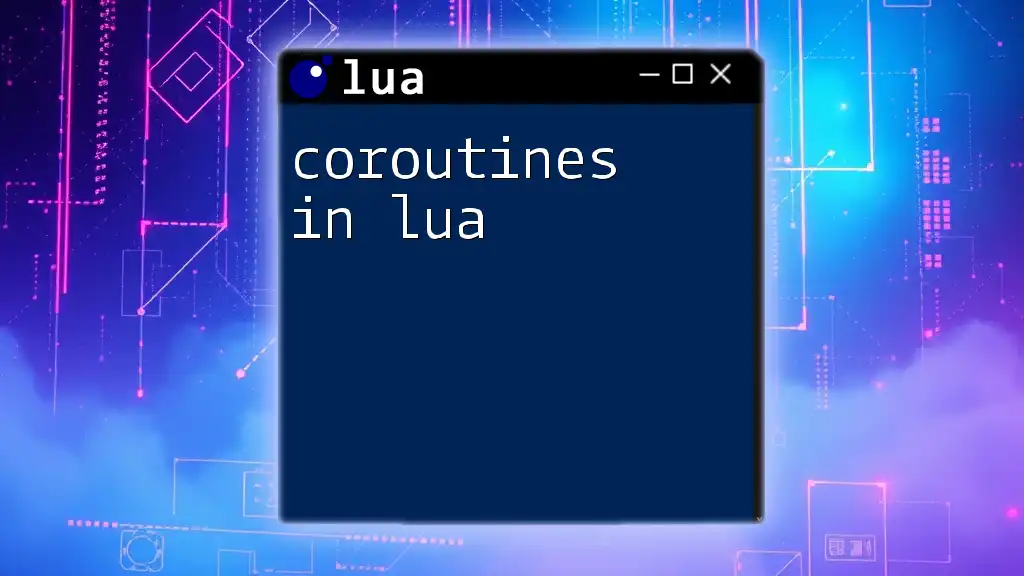
The Importance of Exiting Lua
Why Properly Exiting Matters
In programming, a proper exit is essential. When a Lua program in Open Computers ends without a structured exit, various issues can arise, such as memory leaks and unfinished tasks. For instance, if files are left open or resources unmanaged, the system may encounter errors upon subsequent executions. In contrast, a structured exit helps maintain program integrity and resource management.
Ways to Exit Lua in Open Computers
There are several methods to exit a Lua program within Open Computers. The two primary methods include using the `os.exit()` function and the `return` statement. Each serves its purpose depending on the needs of the program.

Using `os.exit()`
What is `os.exit()`?
The `os.exit()` function is a built-in Lua command that immediately terminates the running Lua program. It is often used when you need to exit the program under specific conditions, such as encountering an error. This function can also return a status code, allowing you to signal success or failure.
Syntax and Parameters
The syntax for `os.exit()` is straightforward:
os.exit(status)
- status: This parameter is optional. Usually, it indicates the exit status: `0` for success and any non-zero value for an error.
Examples of `os.exit()`
A basic example of how to implement `os.exit()` can look like this:
-- Exiting Lua with a success status
os.exit(0)
In this example, using `0` indicates that the program has run successfully. Conversely, if your program encounters an error and you want to exit, you would use:
-- Exiting Lua with an error status
os.exit(1)
Here, `1` signifies an error condition, which can be helpful for tracking down issues in larger projects.
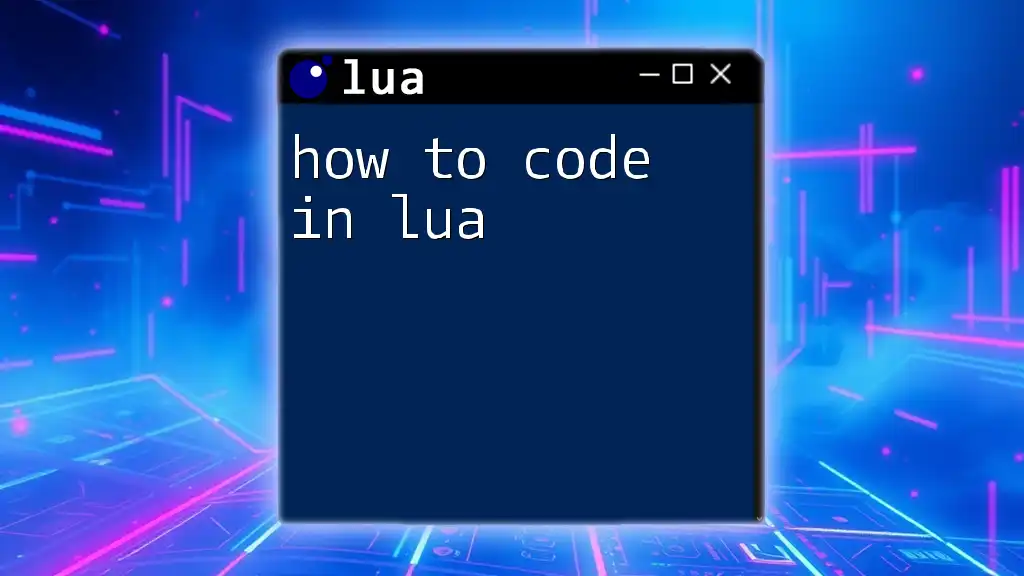
Using `return` to Exit
What is the `return` Statement?
The `return` statement is another way to exit from a function in Lua. Unlike `os.exit()`, which stops all execution, using `return` will only exit the current function, allowing other parts of the program to continue running. This is ideal for structured programs where multiple functions may be executed sequentially.
Syntax and Scenarios
The `return` statement can simply look like this:
function example()
-- Some code here
return
end
In this scenario, the `return` statement cleanly exits the `example()` function, allowing other operations or functions to proceed, thus preventing an abrupt termination of the process.
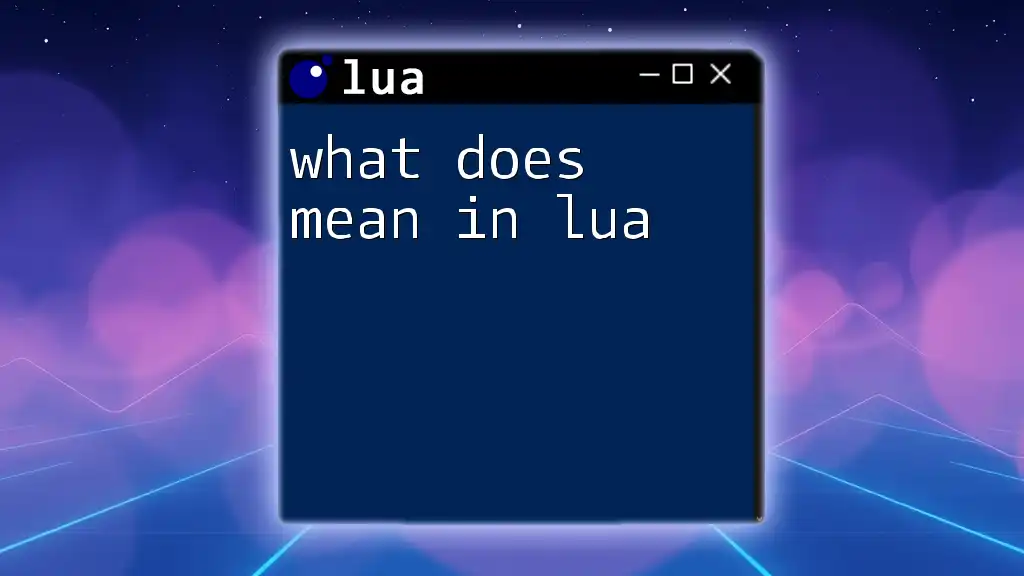
Handling Errors and Exiting
Importance of Error Handling
Effective error handling is crucial in programming. It allows you to manage unexpected situations gracefully, ensuring the program can exit cleanly without leaving resources in a compromised state.
Using `pcall` for Safe Exiting
The `pcall` (protected call) function in Lua is useful for executing a function while catching any runtime errors. If an error occurs, `pcall` prevents the program from crashing unexpectedly and allows you to implement an exit strategy. Here’s how it can be applied:
local success, err = pcall(function()
-- Your main script logic
end)
if not success then
print("Error occurred: " .. err)
os.exit(1)
end
In this example, if your main logic encounters an error, `pcall` will capture it and display an error message before exiting the program with a designated status code.

Best Practices for Exiting Lua Programs
Clean Up Resources
Before exiting a Lua program, it’s essential to clean up any resources you may be using, such as closing files or freeing allocated memory. This practice helps in avoiding potential memory leaks and ensures smooth performance for future runs.
Use Clear Status Codes
Implementing distinct exit codes can provide valuable feedback about a program's execution. For instance, using `0` for success, `1` for minor errors, and `2` for critical failures can create a comprehensive exit strategy that enhances debugging and maintenance.
Comments and Documentation
Clear comments are vital when coding exit logic. They explain why a particular method or status code is used, serving as guidance for anyone who might work with the code later. This is especially important in collaborative environments where multiple developers could be involved.
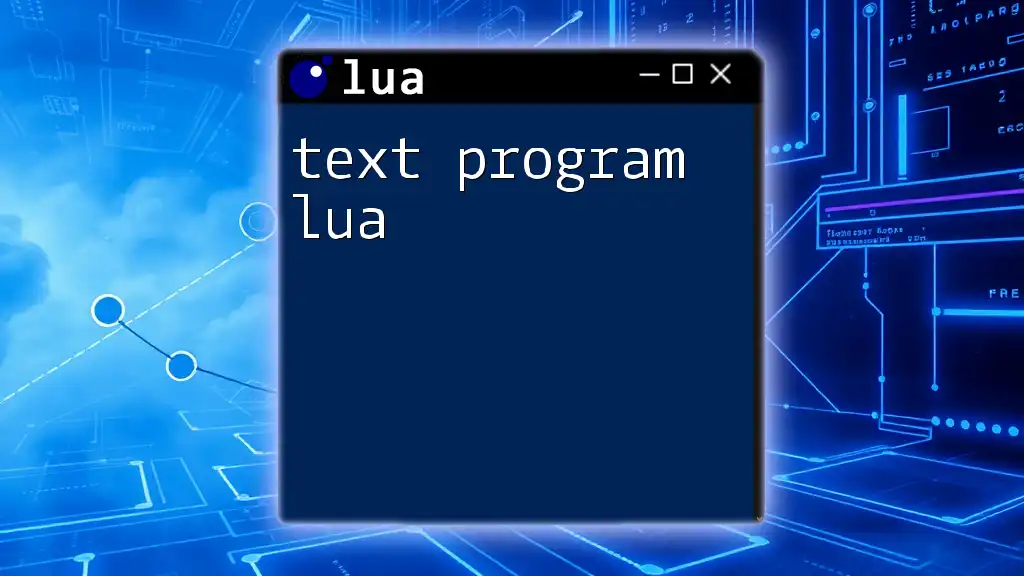
Conclusion
In summary, mastering the "open computers exit lua" commands and understanding the significance of clean exits can greatly enhance the programming experience within Open Computers. Learning to utilize `os.exit()` and `return`, along with proper error handling, will lead to more robust and efficient Lua scripts. As you continue on your journey, remember to explore additional resources and seek help from the community to further your Lua programming skills.

